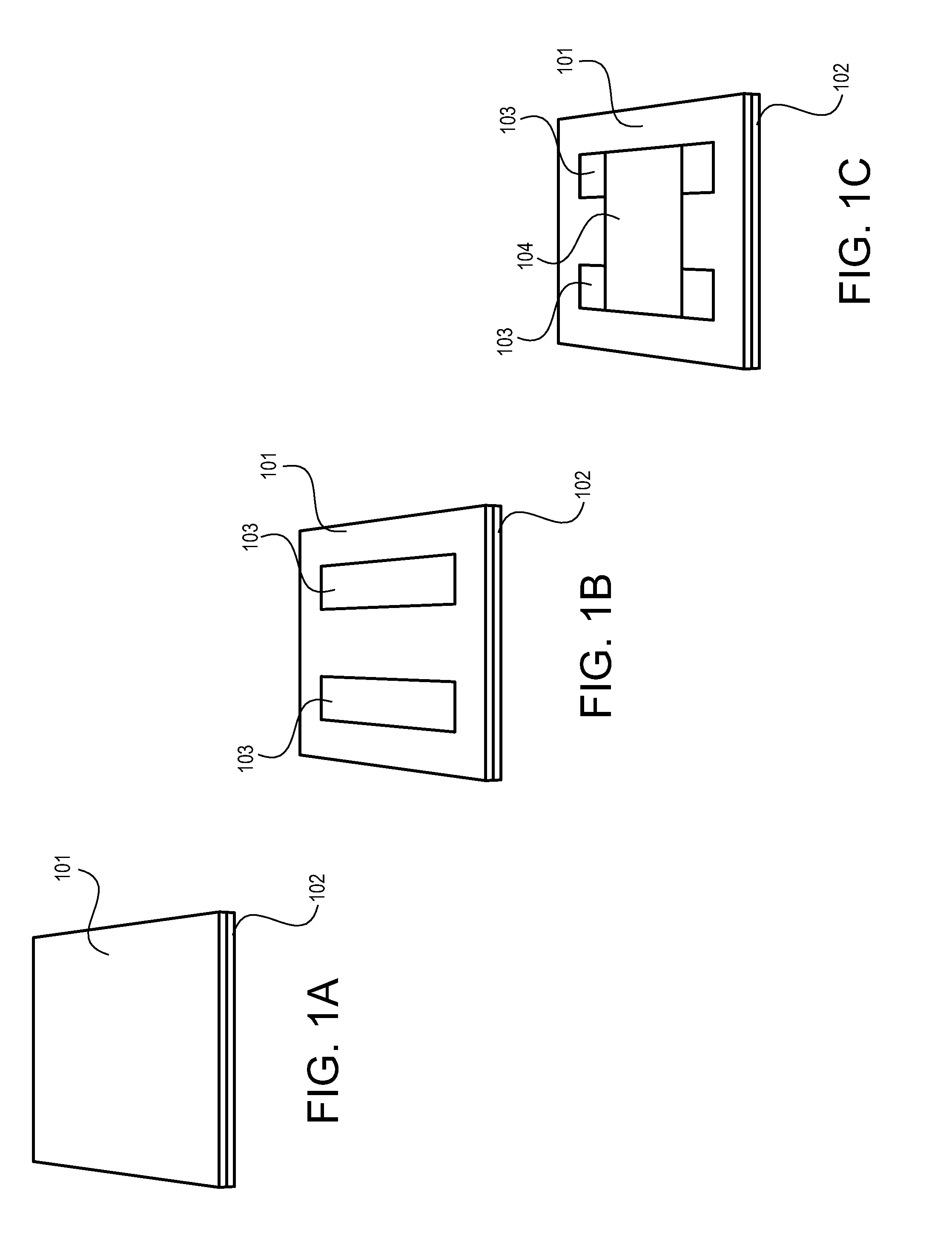Cephalopod Proteins as Proton Conductors
a technology of cephalopod proteins and proton conductors, applied in biochemistry apparatus and processes, instruments, enzymology, etc., can solve the problems of whose potential remains largely unrealized, and achieve the effect of facilitating proton translocation
- Summary
- Abstract
- Description
- Claims
- Application Information
AI Technical Summary
Benefits of technology
Problems solved by technology
Method used
Image
Examples
example 1
[0075]Herein is described the characterization of the conductive properties of platelet-like thin films from a Loligo (Doryteuthis) pealeii reflectin A1 isoform (See references 44-46).
[0076]Materials and Methods: (I) Design and Cloning of Wild Type Mutant Reflectin A1 Genes: A. Wild Type Reflectin A1:
[0077]An E. coli codon optimized gene coding for 6× Histidine-tagged wild type reflectin A1 protein from Loligo (Doryteuthis) pealeii (Genbank: ACZ57764.1) was synthesized and cloned into pJExpress414 vector (DNA 2.0). Mutant: The DE->A mutant reflectin A1 protein was designed using Gene Designer 2.0 software (DNA2.0). To generate the DE->A mutant reflectin A1, all aspartic acid (GAT / GAC) and glutamic acid (GAA / GAG) codons in wild type reflectin A1 were replaced with alanine codons (GCA / GCC / GCG / GCT), resulting in a total of 34 DE->A mutations. The DE->A reflectin A1 mutant gene was then synthesized (GeneArt) and restriction cloned into a pJExpress414 plasmid in frame with an N-terminal ...
example 2
[0131]Ionic transistors from organic and biological materials represent an emerging class of devices for bioelectronics applications. Indeed, the processing and fabrication techniques required for the preparation of these transistors are simple, convenient, and inexpensive. Moreover, the constituent organic or biological materials are amenable to chemical modification and functionalization. In addition, the mechanical properties of organic materials are inherently compatible with those of biological systems. Finally, organic and biological ionic conductors are well suited for the transduction of biochemical events into electronic signals. These key advantages have made ionic transistors from organic and biological materials exciting targets for further research and development.
[0132]Within the broader ionic transistor class of devices, there have been several reports of protonic transistors. For these devices, the application of a voltage to the gate modulates the current flow betwe...
PUM
 Login to View More
Login to View More Abstract
Description
Claims
Application Information
 Login to View More
Login to View More - R&D
- Intellectual Property
- Life Sciences
- Materials
- Tech Scout
- Unparalleled Data Quality
- Higher Quality Content
- 60% Fewer Hallucinations
Browse by: Latest US Patents, China's latest patents, Technical Efficacy Thesaurus, Application Domain, Technology Topic, Popular Technical Reports.
© 2025 PatSnap. All rights reserved.Legal|Privacy policy|Modern Slavery Act Transparency Statement|Sitemap|About US| Contact US: help@patsnap.com


